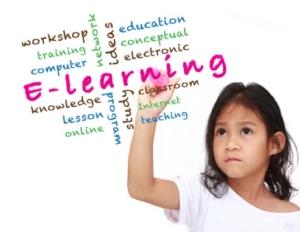A Pathway to Learning
A Pathway to Learning
Since we started a business to provide classroom training for parts and service operations and product support sales and marketing, we have been constantly creating and redesigning what I have always called “Learning Paths.” A pathway to learning is what we try to provide to all employees to help them realize their potential.
With the classroom training we established the first pathway to learning with management and supervision. For this, we designed two-day classes consisting of eight specific subjects. We then developed the three-year program that had twenty-four subjects covered and taught. We offered this and conducted these classes worldwide for major construction equipment manufacturers. We did the same thing for dealership associations. In the mid 1990s we created a series of videos for dealer associations, that continue to be used in certification programs for parts managers and service managers. Clearly the methods, systems, processes and requirements in the past twenty-five years have changed. The modern pathway to learning is reflected in the creation of our skill assessments and in the evolution of our subject specific classes. Much has changed.
As I mentioned yesterday we offered Planned Learning Programs, which we referred to as PLPs. These were the three-year programs built for leaders in the Parts and Service and Product Support Sales groups. During the twenty-five years these were offered we have had over ten thousand people attend the PLPs – Executives, Managers, Supervisors and Foremen from all around the world.
Next, we created Planned Specific Programs, or PSPs in our shorthand here. These programs were designed for the people doing the work. The people that I call “Heroes.” They take the orders, pick the parts, pull the wrenches, inspect the machines, manage the assets, and drive the trucks. These are the people who serve your customers. These are the people that keep your customers coming back.
With this most recent change to our website we are introducing the next evolution of our Learning Paths. This has been designed to allow the individual employee to create their own individualized Learning Paths. As you will have read over the past ten days, if you follow our blog, we start everything with a job function skills assessment. We then match the results of that assessment to the four levels of skills: Basic, Intermediate, Advanced and Expert. When the individual employee selects our classes tabs, and the department in which they are interested they are asked for their skill level. Then, they will be presented the classes that our years of teaching and thousands of students, have indicated that should be covered to provide the employee the ability to improve their Skill Level.
As you can imagine this has taken some time to develop and put together. It provides each employee the opportunity to personalize their own learning, to select the classes they believe will address the “gaps” in their skills and knowledge. Of course, the Dealership and the Leadership can also be involved in selecting the classes that should be taken. That will never change.
Now we are adding additional tools that will allow us to have “Virtual” meetings with students to discuss the classes and, in effect, simulate the Real Classroom after they have completed one of our Subject Specific Classes. This is what educators are doing now across Grade School, Middle School and High School across the country. This is also now being used at Junior Colleges and Universities.
Education and Learning has changed a lot over the past twenty-five years. The changes coming in the next five years will be even more dramatic. No business, whether in manufacturing, distribution, wholesale or retail or business associations can rest on their laurels. There has been too much change.
The equipment has changed, exotic materials, telematics, computerization. The systems have changed now using electronic catalogues and shopping carts, finance and payment methods have changed with “Square” and Touchless Credit Cards. The arrival of Artificial Intelligence and Drones for Job Management and Control. The world has changed.
The younger generation is much better prepared for these changes than the older generations. Their time is here and coming. We either adapt our systems, methods and everything else as of now or face trouble. We, at Learning Without Scars, have chosen to adapt and it has been extremely exciting and energizing. Is this also an opportunity for each and every business across the world? I believe it is.
The choice is yours.
The time is now.



